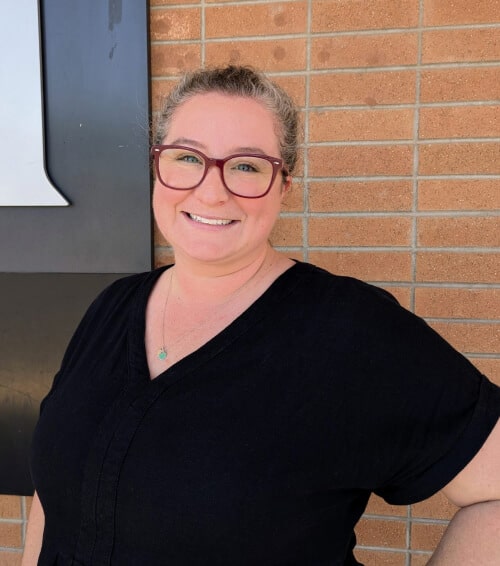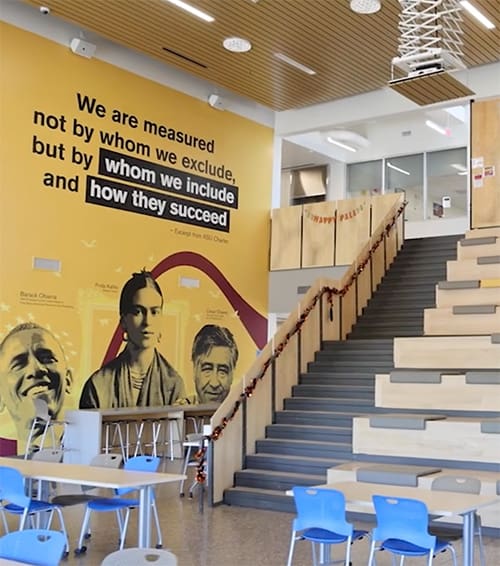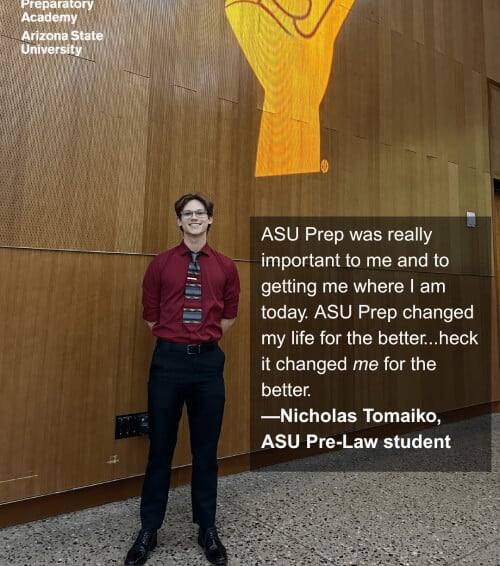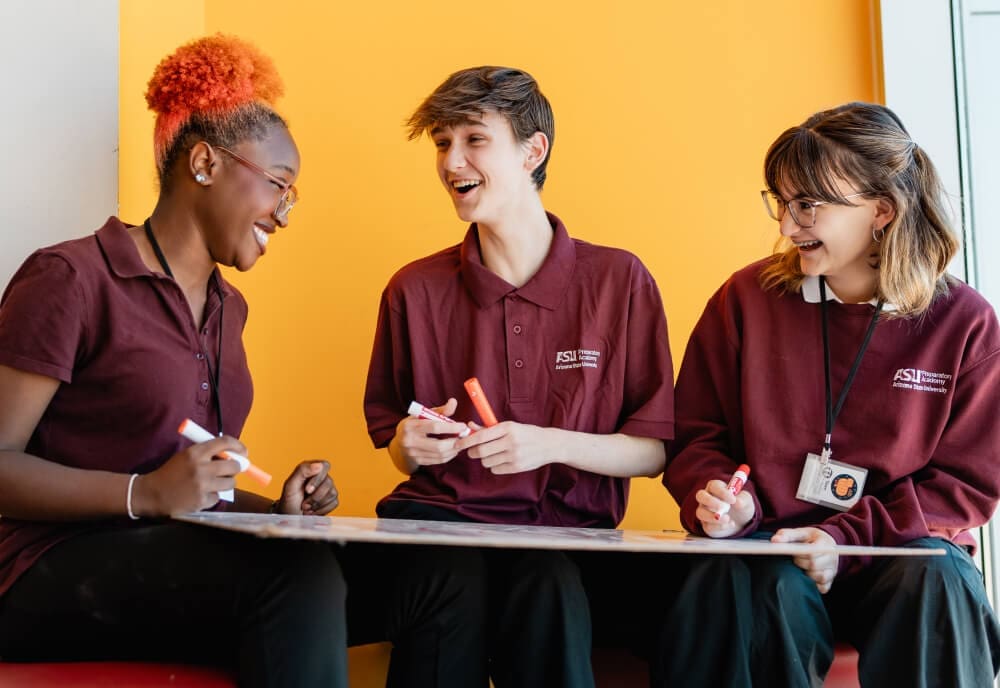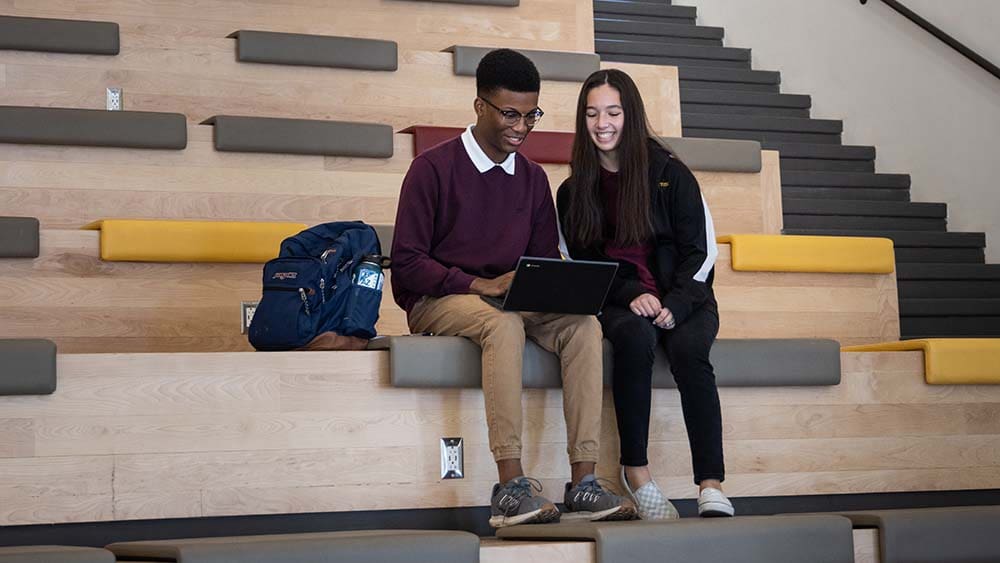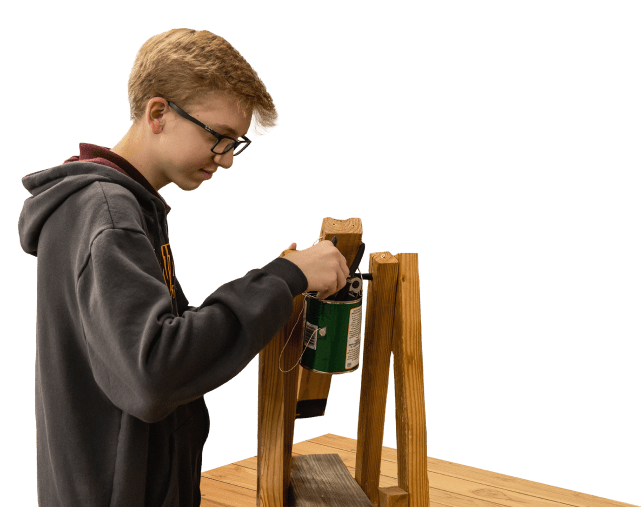Our Mission
Our mission is to design new models for educational success and raise academic achievement for all learners. At ASU Prep that means personalizing project-based learning to help students gain valuable critical thinking skills.
In addition to our standard college-preparatory curriculum, our goal is for students in high school to begin taking ASU courses freshman year, and graduate with at least 15 credits. ASU Prep covers the cost of these courses so families don’t have to! Learn more about how students Prep for College here.
